[Trial version] Main Page
[Trial version] Table of content
[Trial version] Copyright
[Trial version] Preface
[Trial version] What Is the C++ Object Model?
[Trial version] Organization of This Book
[Trial version] The Intended Audience
[Trial version] A Note on Program Examples and Program Execution
[Trial version] Acknowledgments
[Trial version] References
[Trial version] Chapter 1. Object Lessons
[Trial version] Layout Costs for Adding Encapsulation
[Trial version] 1.1 The C++ Object Model
[Trial version] 1.2 A Keyword Distinction
[Trial version] 1.3 An Object Distinction
[Trial version] Chapter 2. The Semantics of Constructors
[Trial version] 2.1 Default Constructor Construction
[Trial version] 2.2 Copy Constructor Construction
[Trial version] 2.3 Program Transformation Semantics
[Trial version] 2.4 Member Initialization List
[Trial version] Chapter 3. The Semantics of Data
[Trial version] 3.1 The Binding of a Data Member
[Trial version] 3.2 Data Member Layout
[Trial version] 3.3 Access of a Data Member
[Trial version] 3.4 Inheritance and the Data Member
[Trial version] 3.5 Object Member Efficiency
[Trial version] 3.6 Pointer to Data Members
[Trial version] Chapter 4. The Semantics of Function
[Trial version] 4.1 Varieties of Member Invocation
[Trial version] 4.2 Virtual Member Functions
[Trial version] 4.3 Function Efficiency
[Trial version] 4.4 Pointer-to-Member Functions
[Trial version] 4.5 Inline Functions
[Trial version] Chapter 5. Semantics of Construction, Destruction, and Copy
[Trial version] Presence of a Pure Virtual Destructor
[Trial version] Presence of a Virtual Specification
[Trial version] Presence of const within a Virtual Specification
[Trial version] A Reconsidered Class Declaration
[Trial version] 5.1 Object Construction without Inheritance
[Trial version] 5.2 Object Construction under Inheritance
[Trial version] 5.3 Object Copy Semantics
[Trial version] 5.4 Object Efficiency
[Trial version] 5.5 Semantics of Destruction
[Trial version] Chapter 6. Runtime Semantics
[Trial version] 6.1 Object Construction and Destruction
[Trial version] 6.2 Operators new and delete
[Trial version] 6.3 Temporary Objects
[Trial version] Chapter 7. On the Cusp of the Object Model
[Trial version] 7.1 Templates
[Trial version] 7.2 Exception Handling
[Trial version] 7.3 Runtime Type Identification
[Trial version] 7.4 Efficient, but Inflexible?
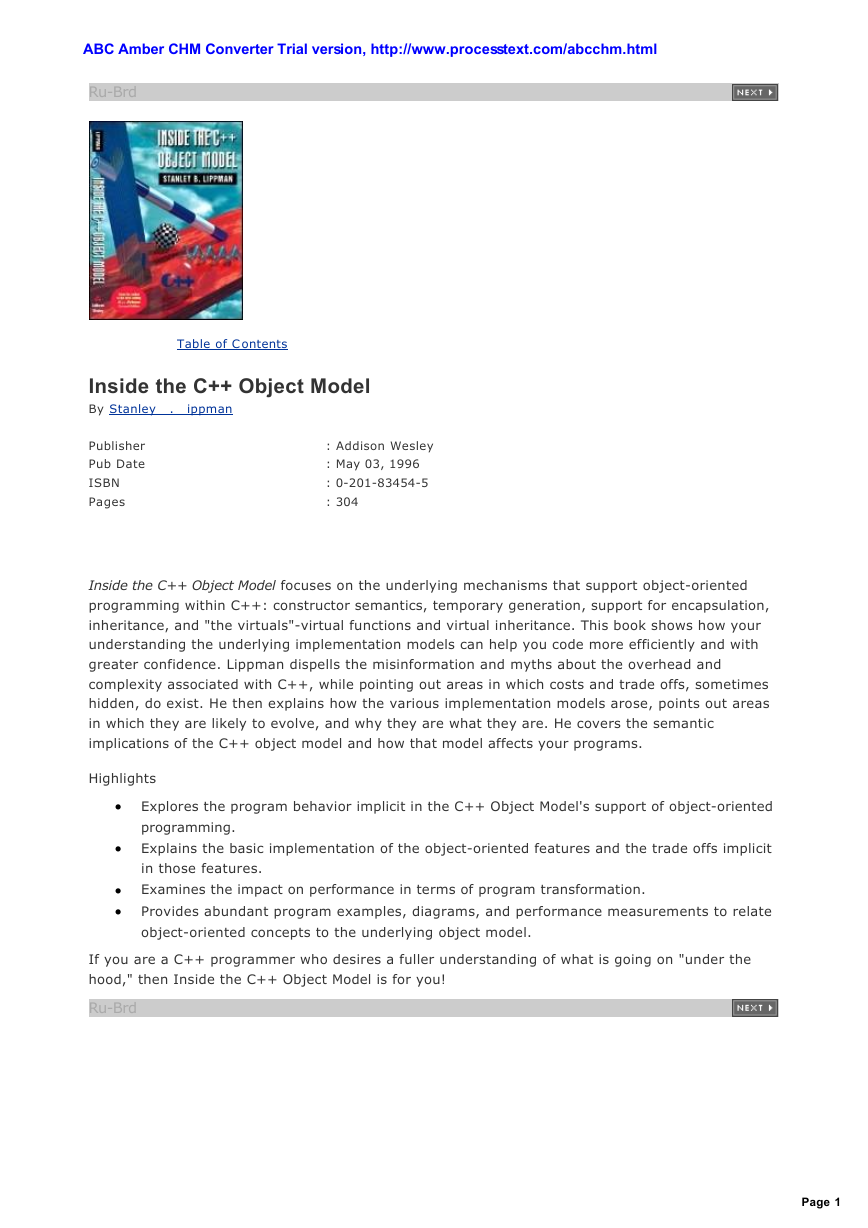

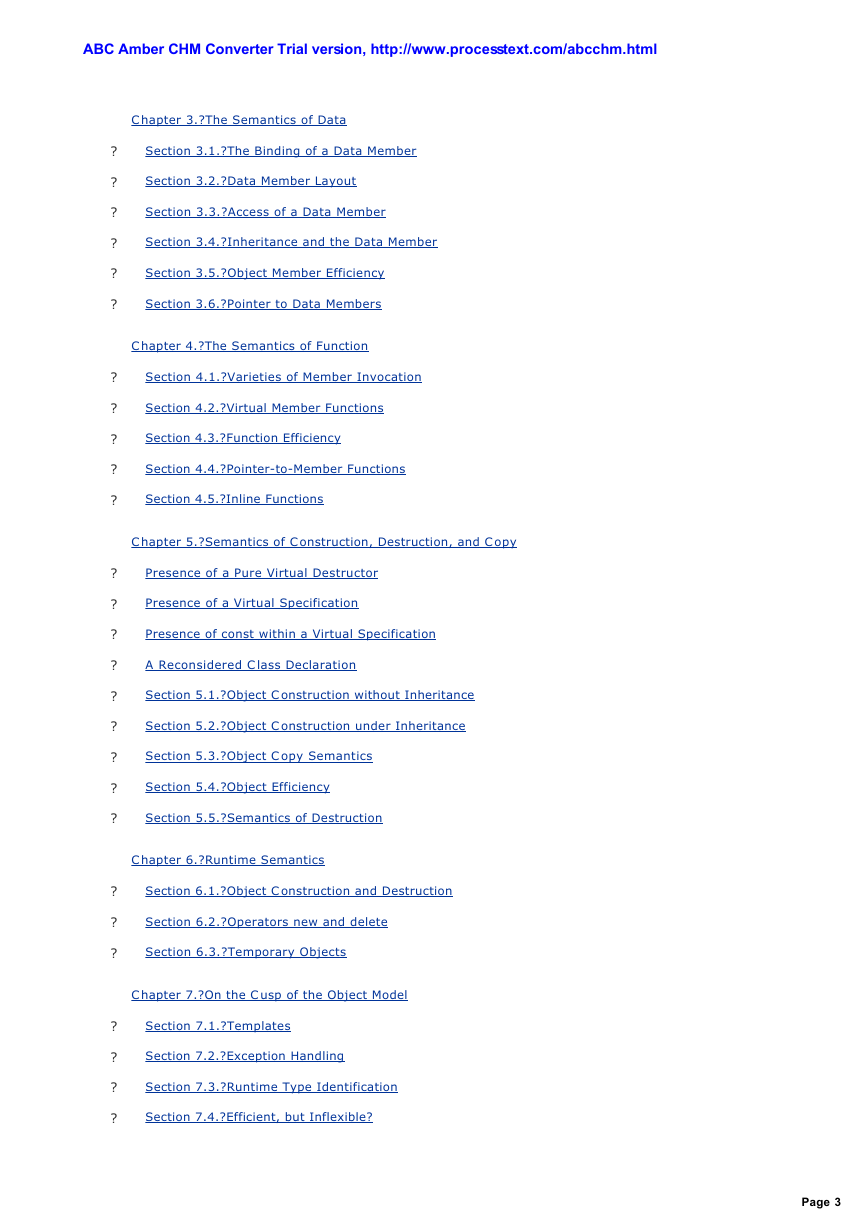

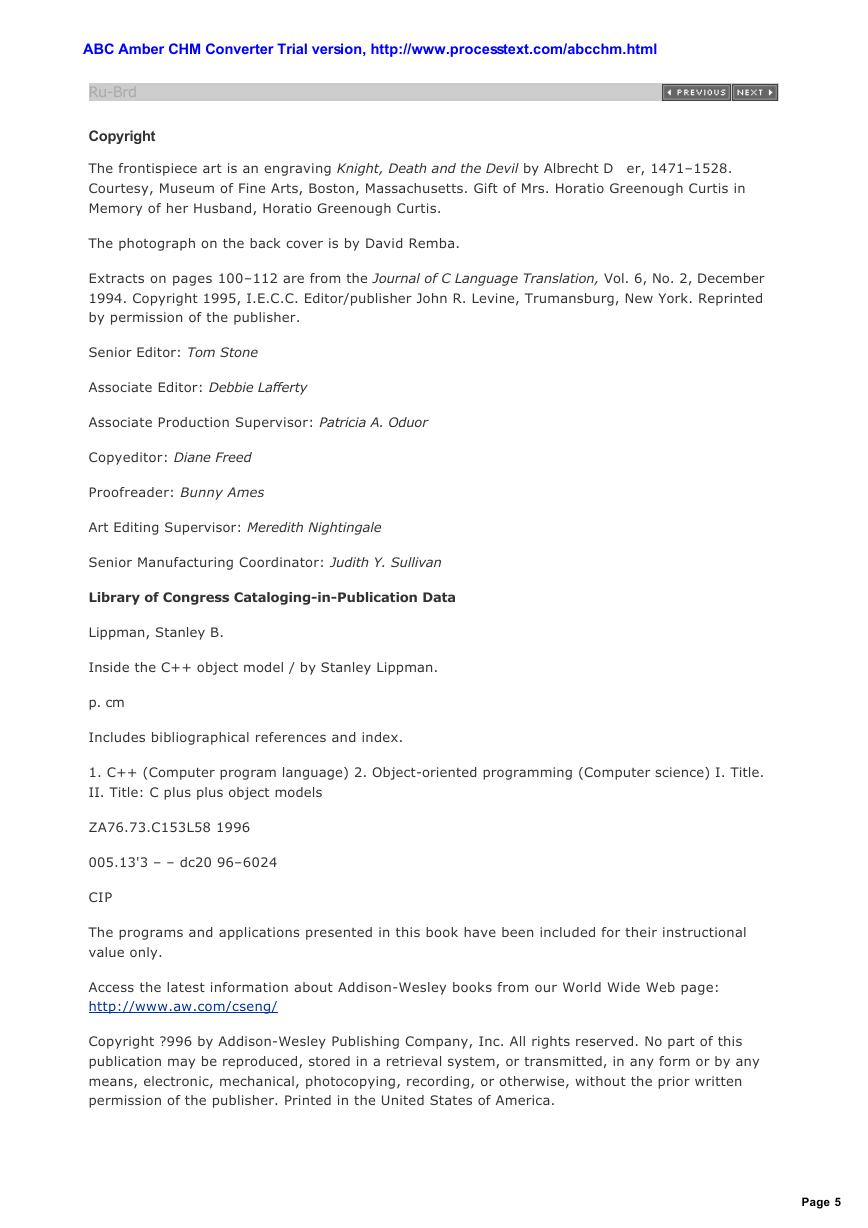
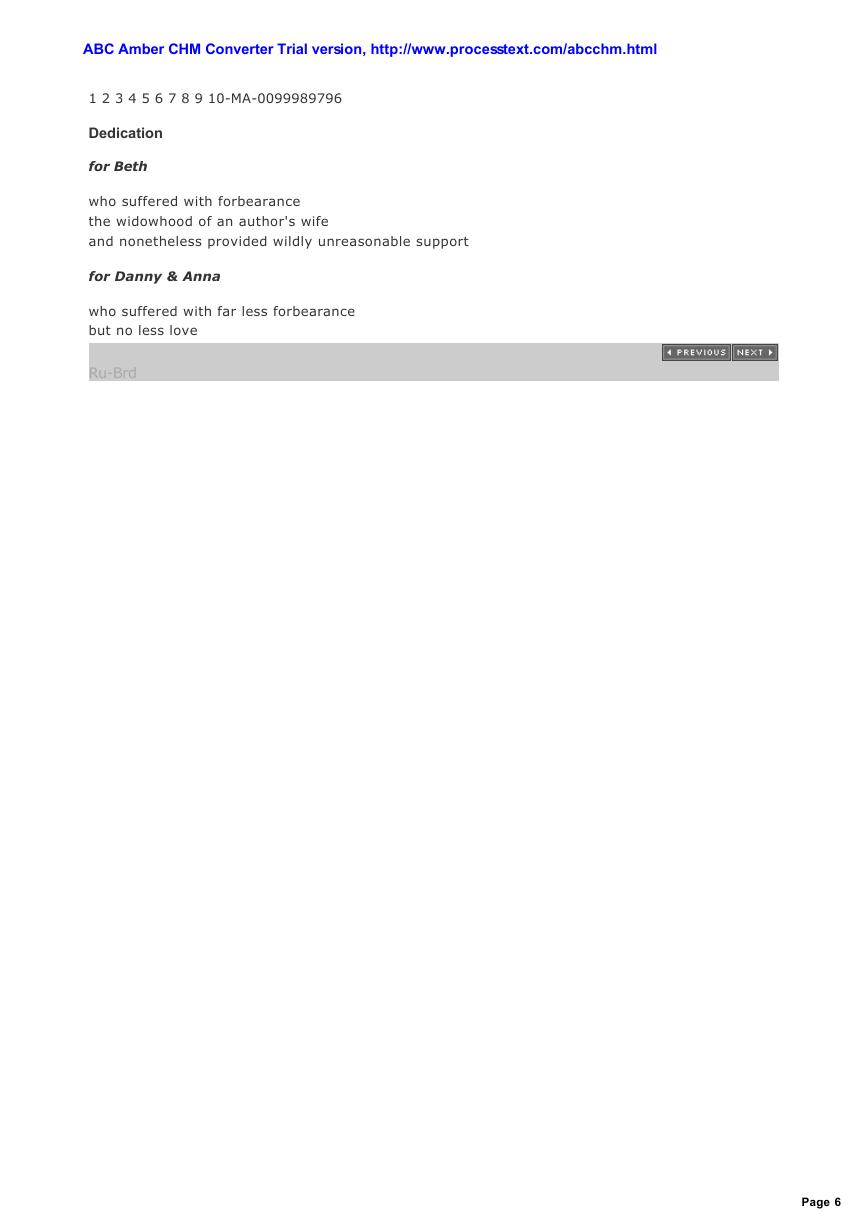
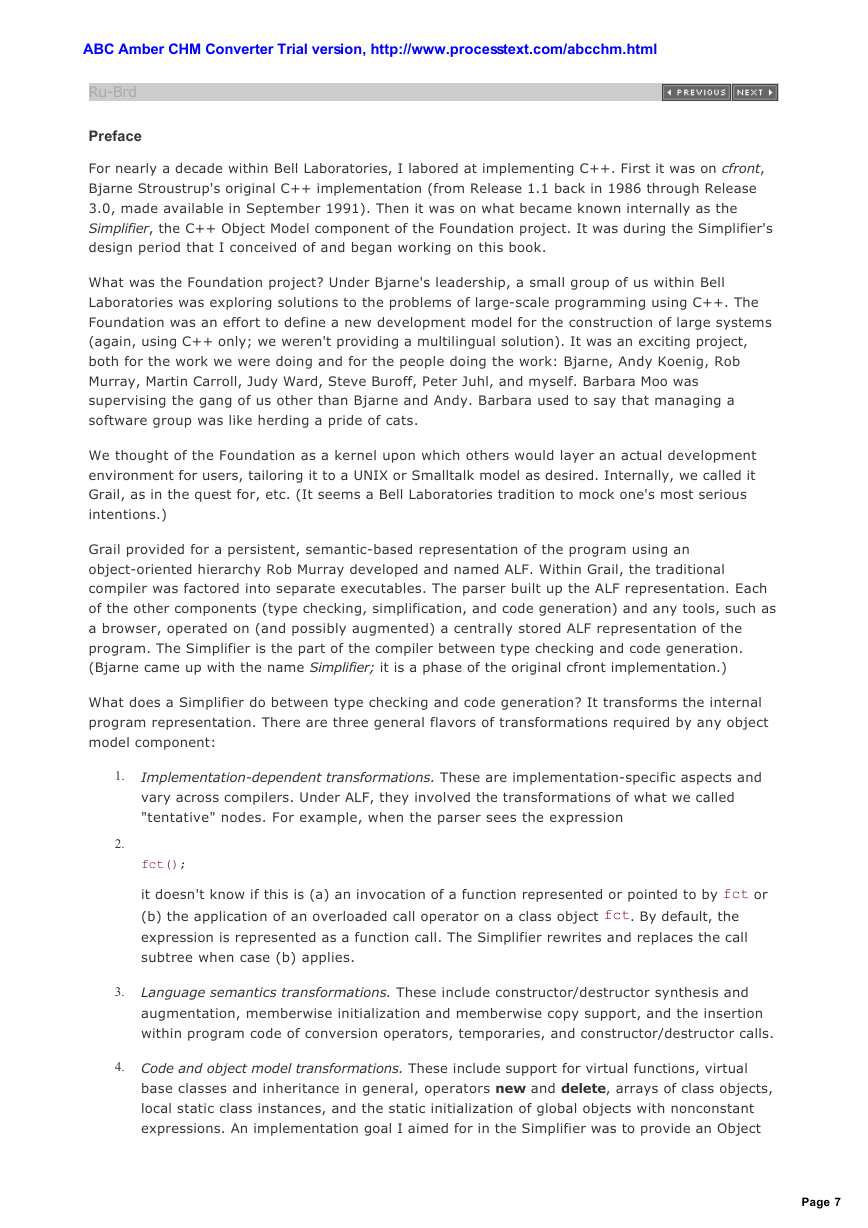









 2023年江西萍乡中考道德与法治真题及答案.doc
2023年江西萍乡中考道德与法治真题及答案.doc 2012年重庆南川中考生物真题及答案.doc
2012年重庆南川中考生物真题及答案.doc 2013年江西师范大学地理学综合及文艺理论基础考研真题.doc
2013年江西师范大学地理学综合及文艺理论基础考研真题.doc 2020年四川甘孜小升初语文真题及答案I卷.doc
2020年四川甘孜小升初语文真题及答案I卷.doc 2020年注册岩土工程师专业基础考试真题及答案.doc
2020年注册岩土工程师专业基础考试真题及答案.doc 2023-2024学年福建省厦门市九年级上学期数学月考试题及答案.doc
2023-2024学年福建省厦门市九年级上学期数学月考试题及答案.doc 2021-2022学年辽宁省沈阳市大东区九年级上学期语文期末试题及答案.doc
2021-2022学年辽宁省沈阳市大东区九年级上学期语文期末试题及答案.doc 2022-2023学年北京东城区初三第一学期物理期末试卷及答案.doc
2022-2023学年北京东城区初三第一学期物理期末试卷及答案.doc 2018上半年江西教师资格初中地理学科知识与教学能力真题及答案.doc
2018上半年江西教师资格初中地理学科知识与教学能力真题及答案.doc 2012年河北国家公务员申论考试真题及答案-省级.doc
2012年河北国家公务员申论考试真题及答案-省级.doc 2020-2021学年江苏省扬州市江都区邵樊片九年级上学期数学第一次质量检测试题及答案.doc
2020-2021学年江苏省扬州市江都区邵樊片九年级上学期数学第一次质量检测试题及答案.doc 2022下半年黑龙江教师资格证中学综合素质真题及答案.doc
2022下半年黑龙江教师资格证中学综合素质真题及答案.doc